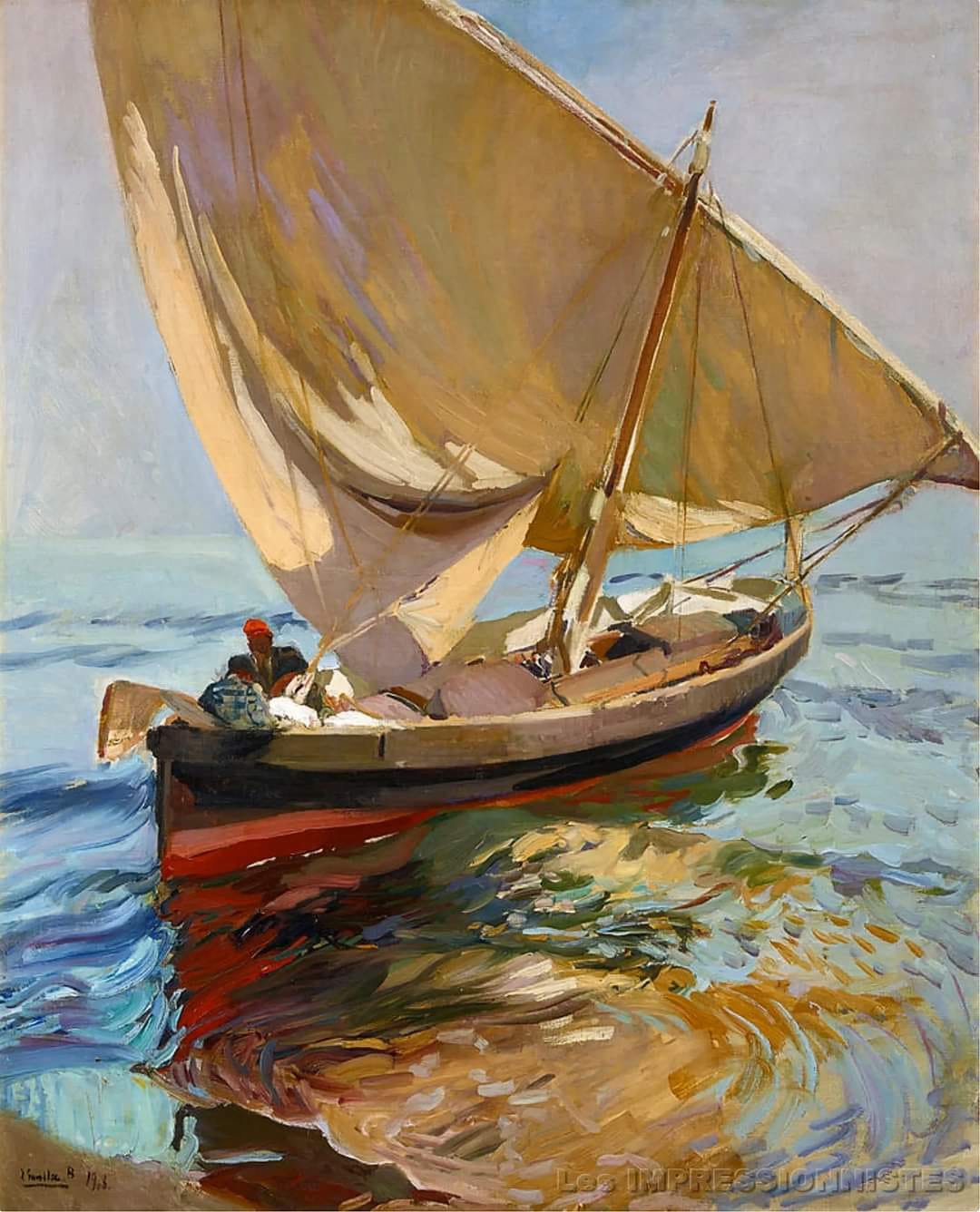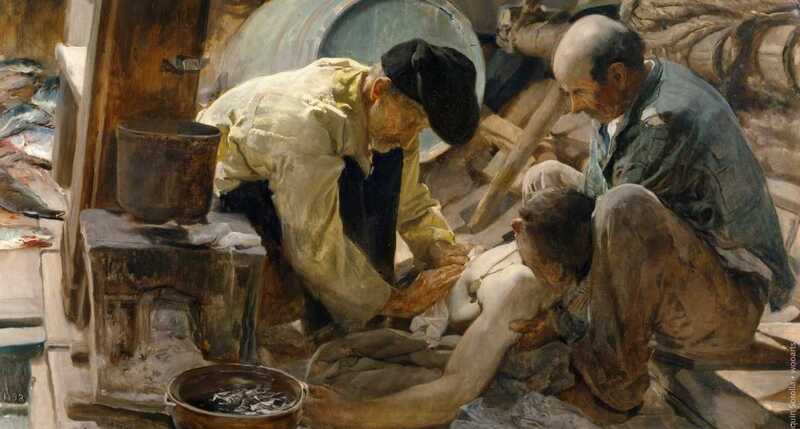Joaquín Sorolla y Bastida was a Spanish painter. Sorolla excelled in the painting of portraits, landscapes and monumental works of social and historical themes. His most typical works are characterized by a dexterous representation of the people and landscape under the bright sunlight of Spain and sunlit water.
Joaquín Sorolla y Bastida (1863-1923) was a renowned Spanish painter known for his Impressionist style and masterful portrayal of light and color. He was particularly celebrated for his sun-drenched coastal scenes, beach landscapes, and vivid portraits. Sorolla’s work is marked by its luminous brushwork, dramatic play of light and shadow, and a vibrant color palette, capturing the essence of life in Spain, especially along its picturesque coast. His ability to evoke the effects of sunlight and create an atmosphere of warmth and vitality in his paintings has made him a highly regarded artist in the realm of Impressionism.
(Spanish: [xoaˈkin soˈɾoʎa]; 27 February 1863 – 10 August 1923)
“All the mistakes committed by artists are due to their having separated themselves from truth, believing that their imagination is stronger. There is nothing stronger than nature. With nature in front of us we can do everything well.”
Joaquín Sorolla – Feb 27, 1863 – Aug 10, 1923

Biography
Joaquín Sorolla was born on 27 February 1863 in Valencia, Spain. Sorolla was the eldest child born to a tradesman, also named Joaquin Sorolla, and his wife, Concepción Bastida. His sister, Concha, was born a year later. In August 1865, both children were orphaned when their parents died, possibly from cholera. They were thereafter cared for by their maternal aunt and uncle, a locksmith.
He received his initial art education at the age of 9 in his native town, and then under a succession of teachers including Cayetano Capuz, Salustiano Asenjo. At the age of eighteen he traveled to Madrid, vigorously studying master paintings in the Museo del Prado. After completing his military service, Sorolla, at age twenty-two, obtained a grant which enabled a four-year term to study painting in Rome, Italy, where he was welcomed by and found stability in the example of Francisco Pradilla, the director of the Spanish Academy in Rome. A long sojourn to Paris in 1885 provided his first exposure to modern painting; of special influence were exhibitions of Jules Bastien-Lepage and Adolf von Menzel. Back in Rome he studied with José Benlliure, Emilio Sala, and José Villegas Cordero.

View Joaquin Sorolla Painting
Sorolla painted two masterpieces in 1897 linking art and science: Portrait of Dr. Simarro at the microscope and A Research. These paintings were presented at the National Exhibition of Fine Arts held in Madrid in that year and Sorolla won the Prize of Honor. Here, he presents his friend Simarro as a man of science who transmits his wisdom investigating and, in addition, it is the triumph of naturalism, as it recreates the indoor environment of the laboratory, catching the luminous atmosphere produced by the artificial reddish-yellow light of a gas burner that contrasts with the weak mauvish afternoon light that shines through the window. These paintings may be among the most outstanding world paintings of this genre.
via: Wikipedia